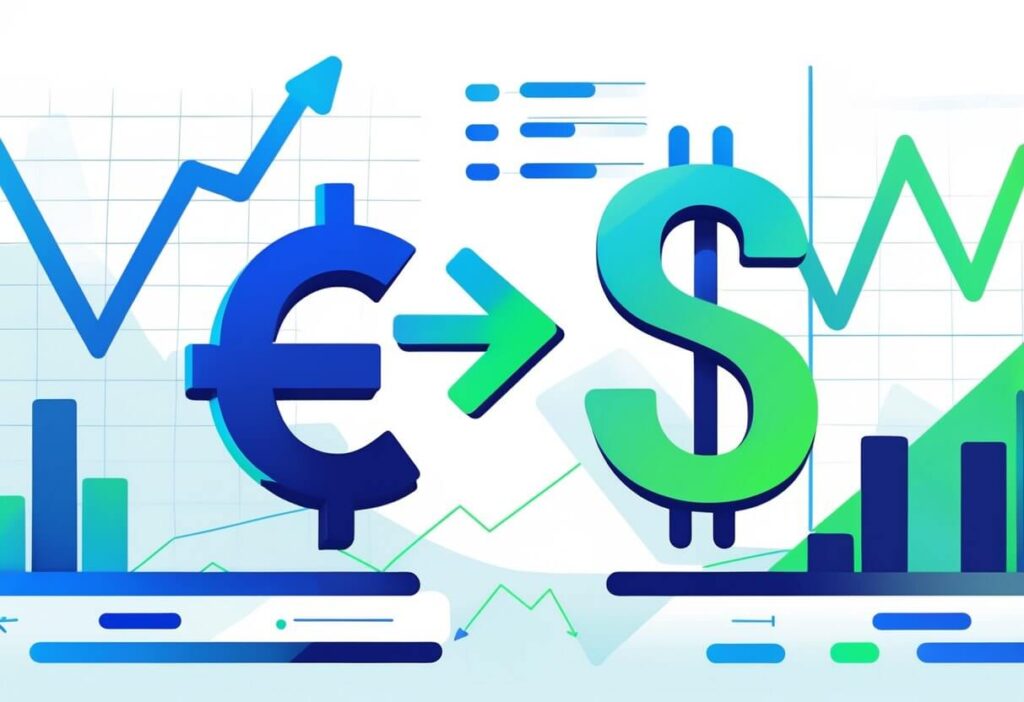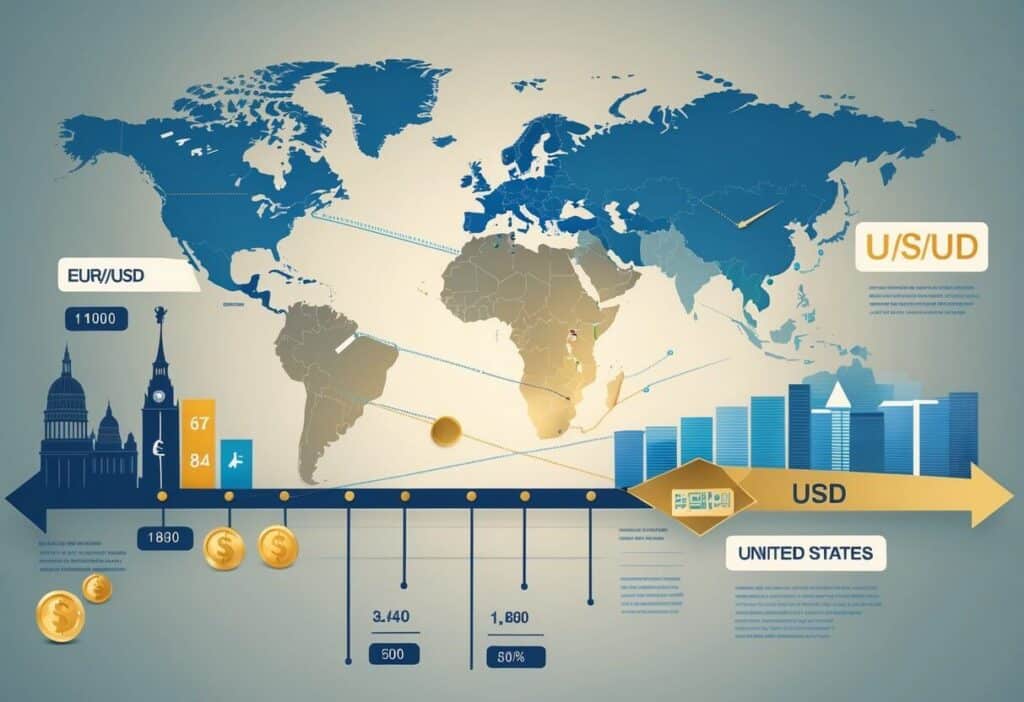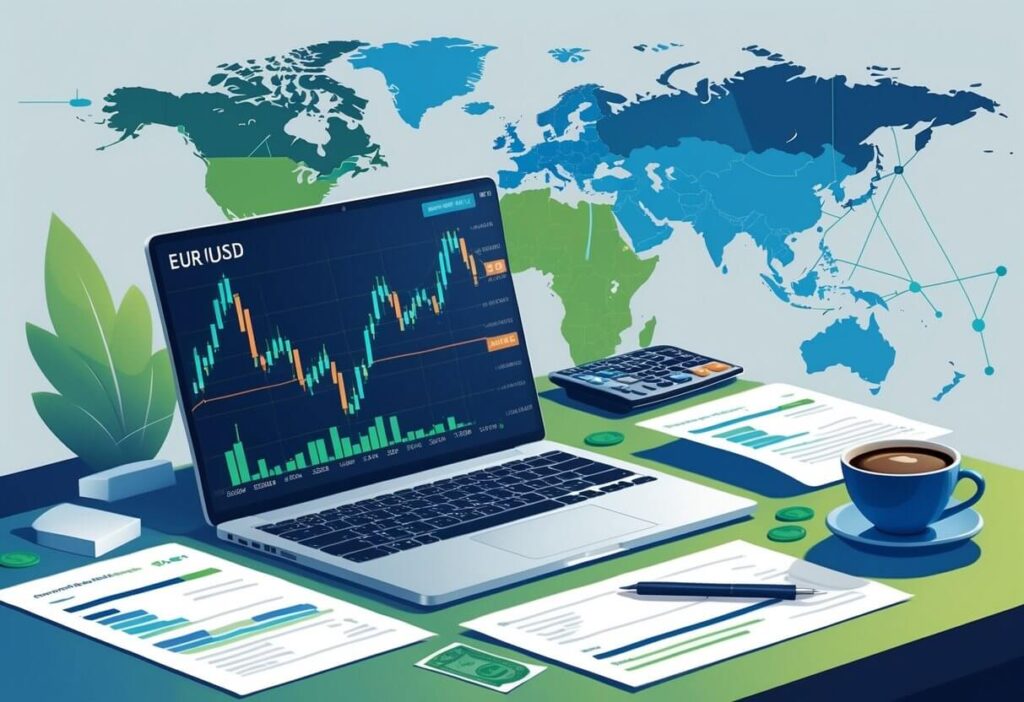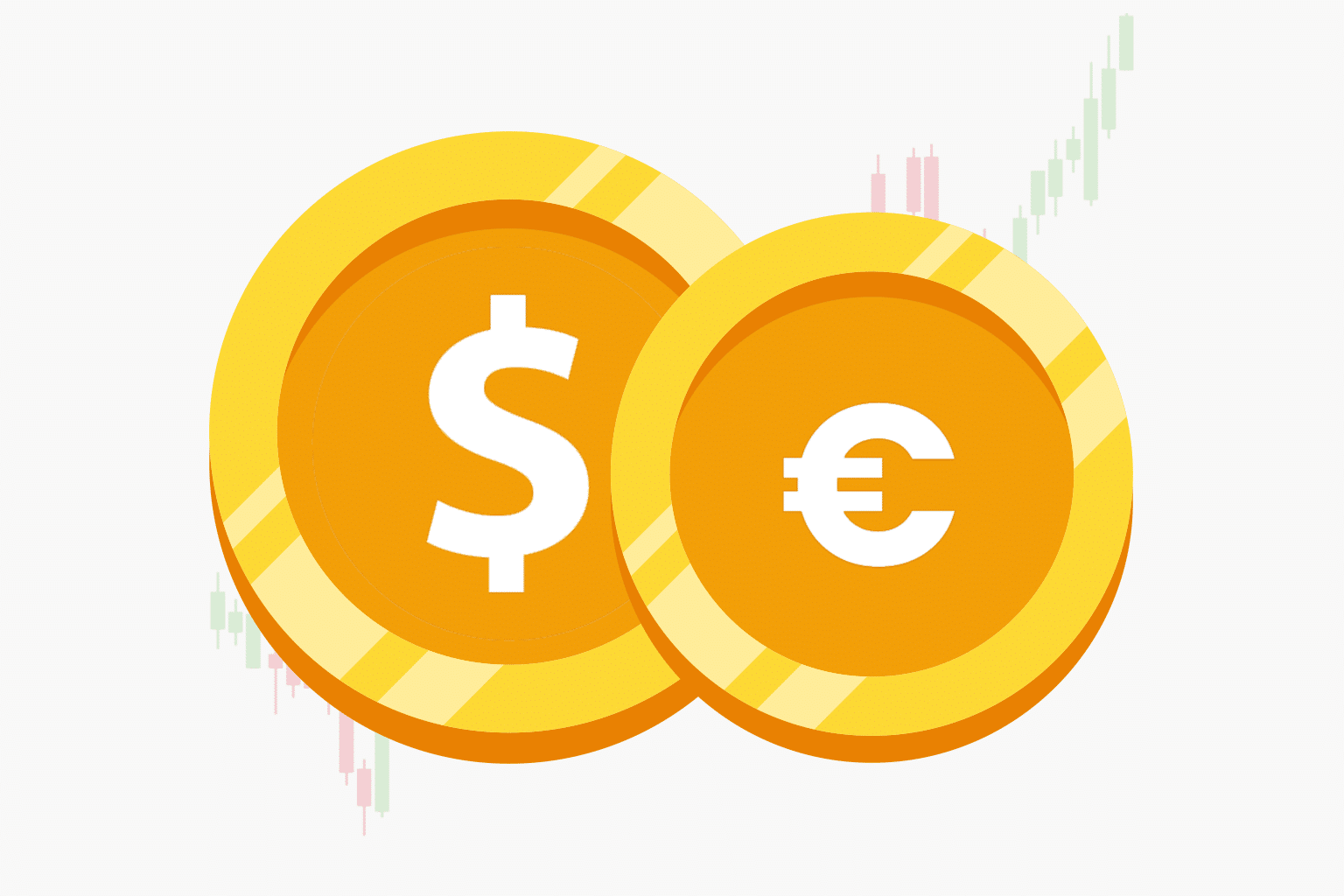I’ve been tracking currency markets for years, and one pair consistently dominates trading volumes and captures investor attention worldwide. EUR/USD represents the exchange rate between the euro and US dollar, showing how many US dollars are needed to purchase one euro.

This most traded currency pair globally reflects the economic relationship between two of the world’s largest economies. When I analyze EUR/USD, I’m essentially examining the relative strength between the eurozone and United States economies.
Understanding EUR/USD goes beyond simple currency conversion. I’ll walk you through its historical development, explain how this pair influences global markets, and explore practical ways to engage with this fundamental forex instrument. Whether you’re new to currency markets or looking to deepen your knowledge, this comprehensive guide covers everything from basic mechanics to investment considerations.
Overview Of EUR/USD
EUR/USD represents the most traded currency pair in the foreign exchange market. The pair shows how many USD are needed to purchase one EUR.
When I look at EUR/USD pricing, the euro serves as the base currency and the USD acts as the quote currency. If EUR/USD trades at 1.20, it means one euro equals 1.20 US dollars.
This currency pair connects two major global economies. The EUR represents the European Union’s monetary system, while the USD reflects the United States economy.
Key EUR/USD Characteristics:
| Feature | Details |
|---|---|
| Base Currency | Euro (EUR) |
| Quote Currency | US Dollar (USD) |
| Market Position | Most liquid forex pair |
| Trading Hours | 24 hours, 5 days per week |
The EUR/USD exchange rate fluctuates based on economic data, interest rates, and monetary policies from both regions. Central bank decisions from the Federal Reserve and European Central Bank significantly impact this pair.
I observe that EUR/USD typically experiences high volatility during European and US trading sessions. The pair’s liquidity makes it attractive for both beginners and experienced traders.
Market participants use EUR/USD to gauge relative economic strength between Europe and America. Political events, trade relationships, and economic indicators from both regions drive price movements in this currency pair.
History & Evolution

I can trace the EUR/USD pair’s history back to January 1, 1999, when the Euro was first introduced as an electronic accounting currency. The Euro emerged from the failure of the European Exchange Rate Mechanism, which had tried to keep European currencies within narrow trading bands.
The initial EUR/USD exchange rate opened at 1.1795 in 1999. However, I witnessed the pair decline significantly over its first few years of existence.
By 2002, when Euro banknotes and coins began circulating across twelve European nations, the pair had fallen to just 0.8907. The currency had reached its lowest point at 0.8225 in October 2000.
Key Historical Milestones:
- 1999: Euro launches electronically at 1.1795
- 2000: Historic low of 0.8225
- 2002: Physical Euro currency begins circulation
- 2008: All-time high of 1.6037 during US financial crisis
I observed the pair’s recovery beginning in November 2002 when it crossed back above parity at 1.0000. The uptrend continued for several years, culminating in the historic peak of 1.6037 in July 2008 amid the US subprime mortgage crisis.
Since reaching that summit, I’ve seen EUR/USD trade within wide ranges. The Greek debt crisis in 2010 pushed the pair down to 1.1876 as concerns about Eurozone stability resurfaced.
The EUR/USD pair now accounts for roughly 30% of daily forex trading volume, making it the world’s most traded currency pair.
Composition & Sector Weights

I need to clarify that EUR/USD is a currency pair, not an index with sector compositions. The EUR/USD pair represents the exchange rate between the euro and US dollar.
However, the underlying economies do have sector weights that influence currency movements. The eurozone economy includes major sectors like manufacturing, financial services, and technology.
Key Eurozone Sectors:
- Manufacturing & Industrial: Germany’s automotive and chemical industries
- Financial Services: Major banks across France, Germany, and Netherlands
- Technology: Growing tech sector including companies like ASML
- Consumer Goods: Luxury brands and retail companies
The EURO STOXX 50 represents eurozone blue-chip companies across these sectors. France represents 41.8% of total assets while Germany accounts for 26.5%.
Major Economic Contributors:
| Country | Economic Weight | Key Sectors |
|---|---|---|
| Germany | ~29% | Manufacturing, automotive |
| France | ~20% | Luxury goods, aerospace |
| Italy | ~15% | Fashion, machinery |
| Spain | ~10% | Tourism, banking |
I track how sector performance affects EUR strength. When European manufacturing data improves, it typically supports the euro against the dollar.
The composition is reviewed annually to reflect changing economic dynamics. Technology sectors have gained prominence while traditional industries maintain significant influence.
Understanding these sector weights helps me analyze EUR/USD movements based on economic data releases from key eurozone industries.
Calculation Methodology
The EUR/USD exchange rate calculation follows a straightforward mathematical process that I’ll break down step by step.
Basic Formula:
- Amount in EUR × Exchange Rate = Amount in USD
- Amount in USD ÷ Exchange Rate = Amount in EUR
Let me demonstrate with practical examples. If the EUR/USD rate is 1.25 and an investor has 364 Euros, they would receive 455 USD when exchanged.
For reverse calculations, I divide USD by the exchange rate. With a rate of 1.42 and 267 USD, the result equals 188.03 EUR.
Key Calculation Steps:
- Identify the current exchange rate
- Determine conversion direction (EUR to USD or vice versa)
- Apply multiplication for EUR to USD
- Apply division for USD to EUR
The exchange rate lets you calculate how much currency you can buy for a certain amount of money.
Rate Determination Formula: Total USD ÷ Total EUR = Current Exchange Rate
For instance, exchanging 796 USD for 610 EUR gives a rate of 1.30 EUR/USD.
Financial institutions analyze historical data, economic events, and political developments to establish these rates. The calculations remain consistent across platforms, though actual rates may vary slightly between providers due to spreads and fees.
Significance & Common Uses
The EUR/USD currency pair represents the most traded pair globally, making it incredibly significant in financial markets. I observe that this pair accounts for roughly 24% of all daily forex transactions worldwide.
Primary Trading Applications:
- Speculation – I can profit from price movements in either direction
- Hedging – Businesses use it to protect against currency risk
- Investment – Portfolio diversification across major economies
The pair’s high liquidity means I encounter tight spreads and minimal slippage when trading. This makes it cost-effective for both beginners and professionals.
| Key Advantage | Benefit |
|---|---|
| High Volume | Easy entry/exit |
| Tight Spreads | Lower costs |
| 24/5 Trading | Flexible timing |
I find that EUR/USD serves as a benchmark for the entire forex market. Many trading strategies focus specifically on this pair due to its predictable behavior patterns.
Economic Significance:
The pair reflects the economic health of two major regions. When I analyze EUR/USD, I’m essentially comparing the strength of European and American economies.
Central banks, institutional investors, and retail traders all rely on EUR/USD for various purposes. Its movements influence global trade decisions and cross-border investments significantly.
How To Invest (No Advice)

I can access EUR/USD through several investment vehicles. The most direct method involves trading through a forex broker that offers currency pairs.
Common Investment Methods:
- Forex brokers – Direct currency pair trading
- ETFs – Currency-focused exchange-traded funds
- Mutual funds – International or currency hedge funds
- CFDs – Contracts for difference on the pair
I need to open a trading account with a regulated broker first. Most platforms require identity verification and a minimum deposit that varies by provider.
EUR/USD trading strategies typically combine technical and fundamental analysis. I can monitor economic indicators from both the Eurozone and United States.
Key Factors I Monitor:
| Factor Type | Examples |
|---|---|
| Economic Data | GDP, inflation, employment |
| Central Bank Policy | ECB and Federal Reserve decisions |
| Political Events | Elections, policy changes |
| Market Sentiment | Risk appetite, global events |
I can trade EUR/USD during different market sessions. The pair shows highest liquidity during European and US trading hours when both markets overlap.
Position Types:
- Long EUR/USD – Buying euros, selling dollars
- Short EUR/USD – Selling euros, buying dollars
Demo accounts let me practice without real money. I can test strategies and understand platform features before committing capital.
The pair’s high liquidity means tighter spreads compared to exotic currency pairs. I benefit from better pricing and easier order execution.
Common Questions On EUR/USD
The EUR/USD pair generates frequent questions about its review frequency, comparison with similar currency pairs, and real-time tracking options. These queries reflect traders’ needs for understanding market mechanics and accessing current exchange rate information.
How Often Is The Index Reviewed?
EUR/USD is not technically an index but rather a currency pair representing the exchange rate between the euro and US dollar. The exchange rate updates continuously during forex market hours.
Trading Hours:
- Monday 5:00 PM EST to Friday 5:00 PM EST
- 24-hour trading Sunday evening through Friday evening
- No weekend trading when markets close
The rate changes every few seconds based on supply and demand. Major central bank announcements from the Federal Reserve and European Central Bank can trigger significant rate movements.
Economic data releases occur on scheduled dates throughout the month. These include employment reports, inflation data, and GDP figures from both regions.
What’s The Difference Between EUR/USD And Close Peer?
The most traded currency pair globally differs from its closest peers in several key aspects. GBP/USD represents the British pound against the dollar, while USD/JPY pairs the dollar with the Japanese yen.
Key Differences:
| Pair | Daily Volume | Volatility | Spread |
|---|---|---|---|
| EUR/USD | Highest | Moderate | Tightest |
| GBP/USD | High | Higher | Wider |
| USD/JPY | High | Lower | Tight |
EUR/USD typically offers the tightest spreads due to its massive liquidity. GBP/USD tends to be more volatile, especially around Brexit-related news.
USD/JPY often moves differently because Japan’s economy has unique characteristics. The yen serves as a safe-haven currency during market stress.
Where Can I Track The Index Live?
I can track EUR/USD rates through multiple platforms offering real-time data. Financial websites, trading platforms, and mobile apps provide current exchange rates.
Popular Tracking Options:
- TradingView – Free charts with technical indicators
- Yahoo Finance – Basic rate information and historical data
- Investing.com – Live rates with economic calendar
- Broker platforms – Real-time execution prices for trading
Most platforms display the rate as a four-decimal number (1.0523, for example). The fourth decimal place represents a pip, the standard unit for measuring price changes.
Professional traders often use multiple data sources. Broker platforms show executable prices, while financial news sites provide market commentary and analysis.
Mobile apps send push notifications for significant rate movements. I recommend using platforms that update rates every few seconds during active trading hours.





